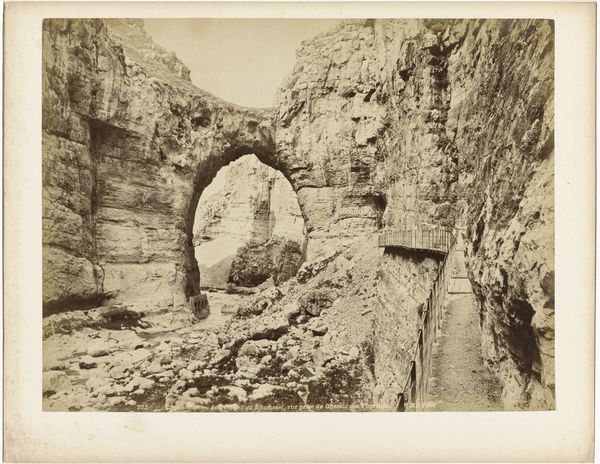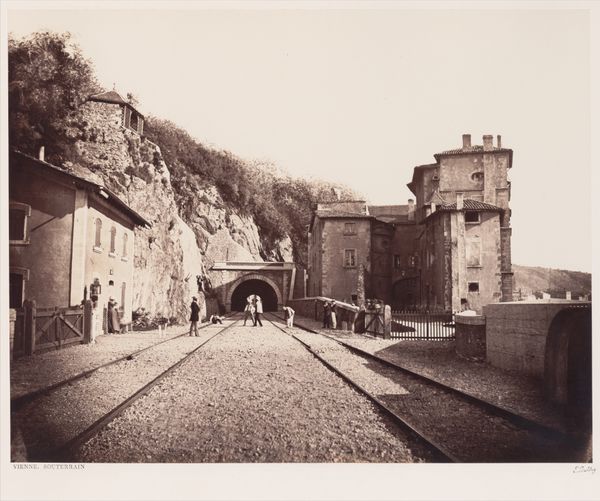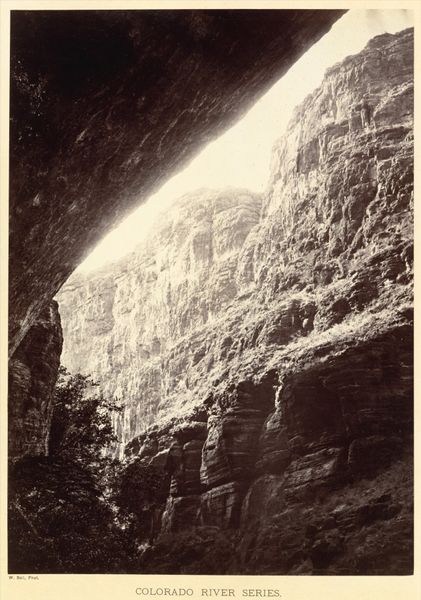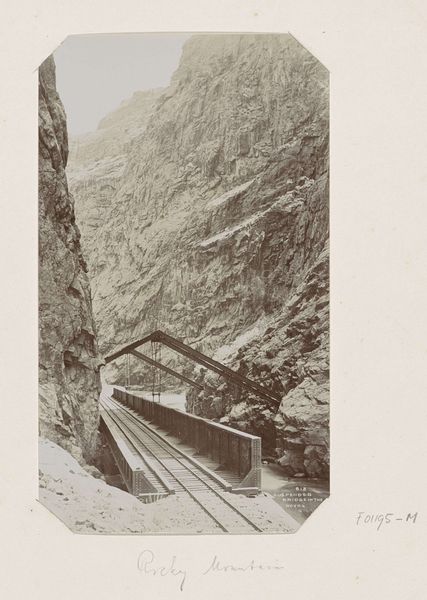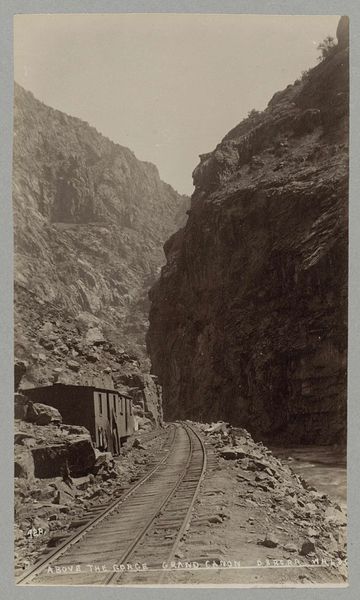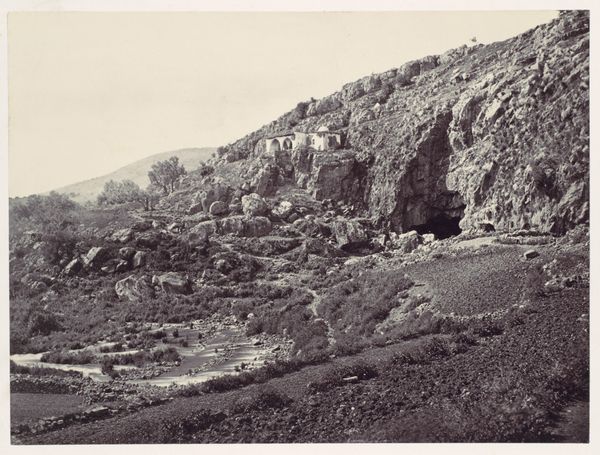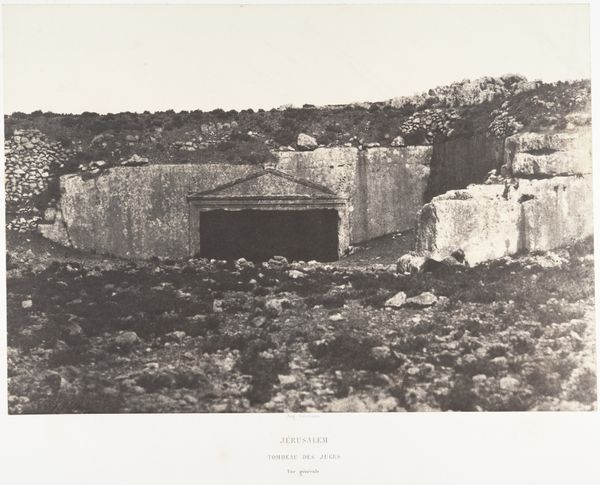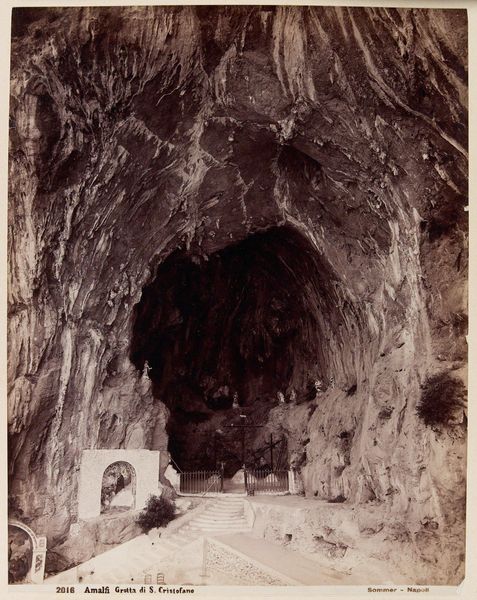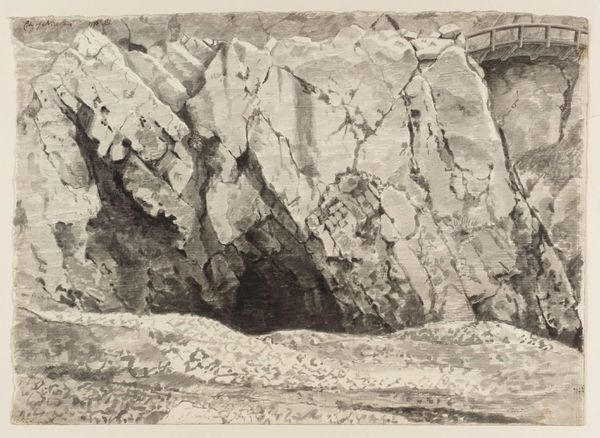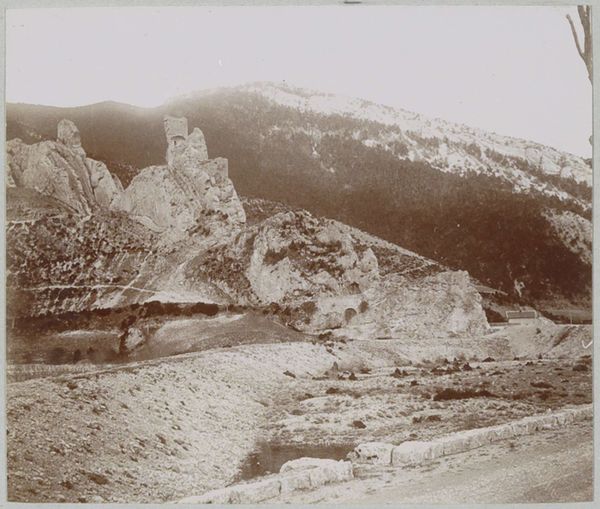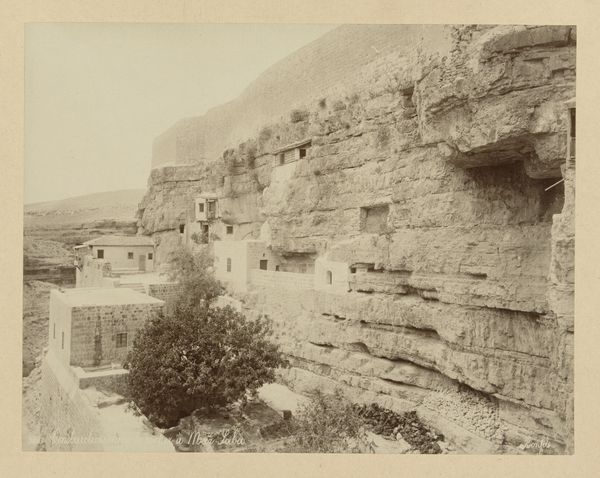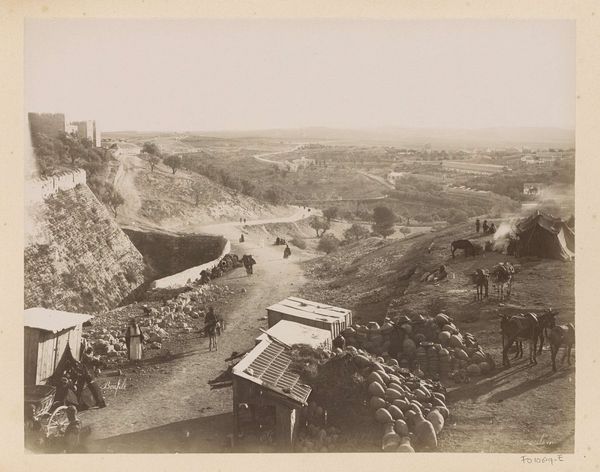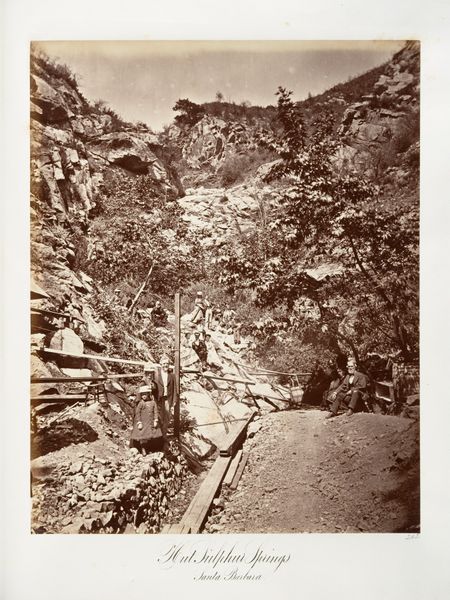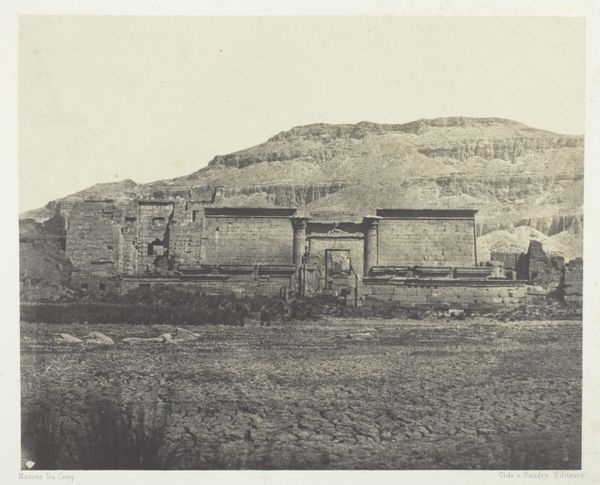
Dimensions: Image: 32.5 x 43.4 cm (12 13/16 x 17 1/16 in.) Mount: 46 x 60.5 cm (18 1/8 x 23 13/16 in.)
Copyright: Public Domain
Curator: What strikes me immediately about Edouard Baldus' "Souterrain de la Nerthe" is its almost melancholic stillness. Editor: Stillness is certainly part of it. Baldus took this photograph between 1860 and 1862, and it captures the Nerthe tunnel along the Marseille to Avignon railway line. It’s interesting to consider it in the context of rapid industrialization and its impact on the French landscape. Curator: Oh, absolutely, I see it! The tunnel seems to yawn, a dark passage carved right into the heart of that magnificent rock face. You’ve got this brutal, almost violent intervention of industry, yet rendered in this incredibly soft, sepia tone, it evokes a sense of contemplation. A real collision. Editor: It's a collision, yes, but one that's deeply intentional. Baldus, through his photography, participated in shaping the narrative around modernity. Railroads symbolized progress, but the photographs also presented these imposing, sometimes destructive, constructions as majestic elements in themselves, almost erasing their disruptive nature. Curator: That makes perfect sense, but he also uses light so beautifully here. Notice how it hits the mouth of the tunnel, a whisper of daylight promising something…or perhaps warning of the unknown. It's as if nature is resisting this mechanical intrusion. Editor: Perhaps “resisting” is too passive. We could also see this photograph as documenting the beginning of the Anthropocene, capturing a pivotal moment where humans begin indelibly reshaping the earth, for better or worse. Consider how the workers involved in building this railroad were treated. What did 'progress' truly cost? Curator: True, true, the human cost is implicit. I’m so fixated on the light, I almost missed the obvious! Now it really pulls it together for me: this isn’t just about a train tunnel. Editor: It's about control, about the claims made by colonial, capitalist societies about what counts as 'civilization' and the kind of development worth celebrating. Curator: What an unsettling photo when viewed in that context! I see the ambition, I see the romanticism, but also this creeping dread that things are maybe not quite as wonderful as they appear. Editor: Exactly. The sepia tones can feel deceptively nostalgic until we probe beneath the surface and critically interrogate the historical and cultural baggage that photography carries.
Comments
No comments
Be the first to comment and join the conversation on the ultimate creative platform.
